A Google dynamic ad landing page may be the key to bringing old school sales strategies into the future. For centuries - perhaps since the beginning of trade -the mark of a good salesperson is knowing what your customer wants. You seal the deal when you’re able to show the client why they want your product.
This philosophy worked in haberdasheries in the 1800s and second-hand car dealerships in the 1960s, and it’s still working. Tailoring your pitch to the individual customer can be difficult in the techno-age. With the infinite number potential of clients online, how can you personalise your sales tactics to each one?
We’ve touched on the thinking behind dynamic ad pages, but let’s discuss them more practically, by way of example.
You’re an accounting firm, and you’re running a campaign for a free personal financial assessment. You can change the headline of your landing page depending on the search phrase they used. This concept is called dynamic keyword insertion.
If the phrase were ‘get personal financial assessment’ the Google Ad page heading would be ‘Get Your Personal Financial Assessments’. On the other hand, if the key phrase were ‘quick personal financial assessments’ your heading would be ‘Get A Quick Personal Financial Assessment For Free’.
A dynamic ad page may seem technically daunting, but they are worth it. Whether you campaigns is targeting more free trial sign-ups, demo bookings, etc., dynamic ad pages can make the process faster.
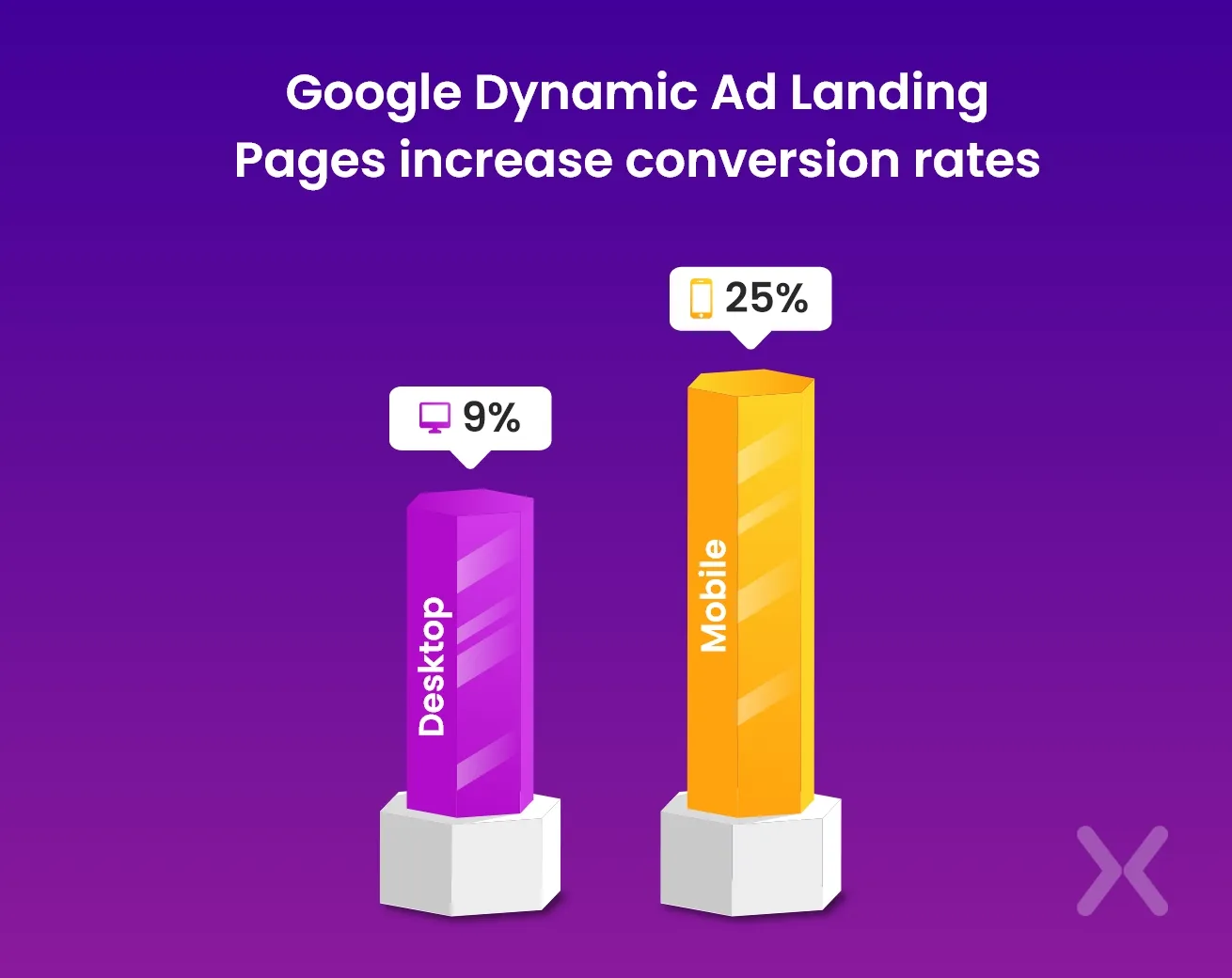
Conversion is the name and communication is the game. As with all marketing strategies, dynamic ad landing pages aim to increase conversion. The use of dynamic keyword insertion makes the landing page content more relevant to the user. One study found that dynamic pages increase conversion rates by 9% and 25% on desktop and mobile, respectively.
To remain relevant, Google must produce search results that meet the user’s needs to do that; they must strictly monitor quality. Poor content detracts from Google’s usefulness.
To address this issue, Google ranks different types of landing pages according to how relevant the content is to the user. This is quantified as a ‘quality score’. A good quality score - in other words, highly relevant content - brings down your cost-per-click. Giving you a competitive edge- more exposure for a smaller cost.
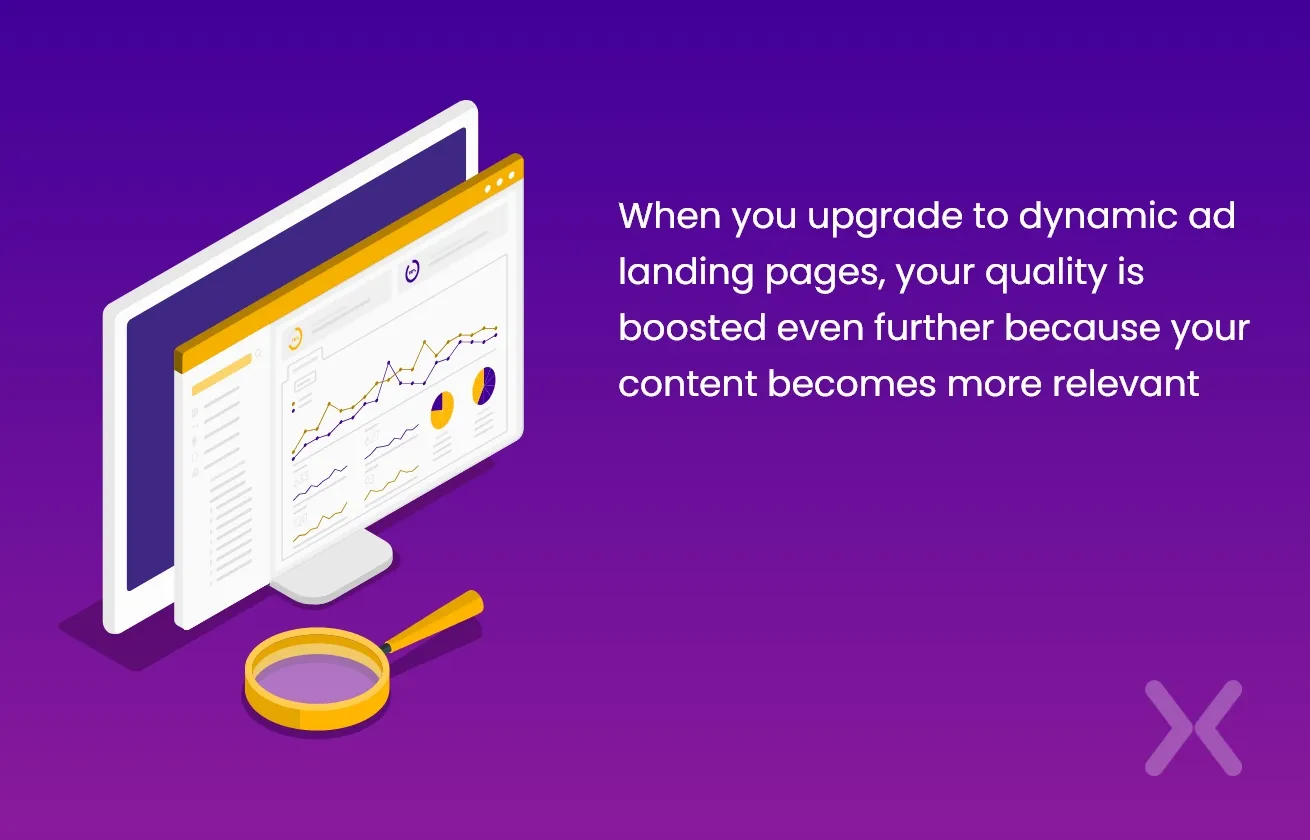
Landing pages are an element essential to achieving a good quality score. By their very nature, landing pages focus on one campaign at a time. Landing pages shouldn’t include irrelevant additional information. Furthermore, your keyword, ad, and landing are all related to each other - and tell the same story.
When you upgrade to Google dynamic landing pages, your quality is boosted even further because your quality becomes more relevant. The search phrase that the client uses is inserted into the ad landing page.
Related: Landing Page Subdomains Explained With Examples
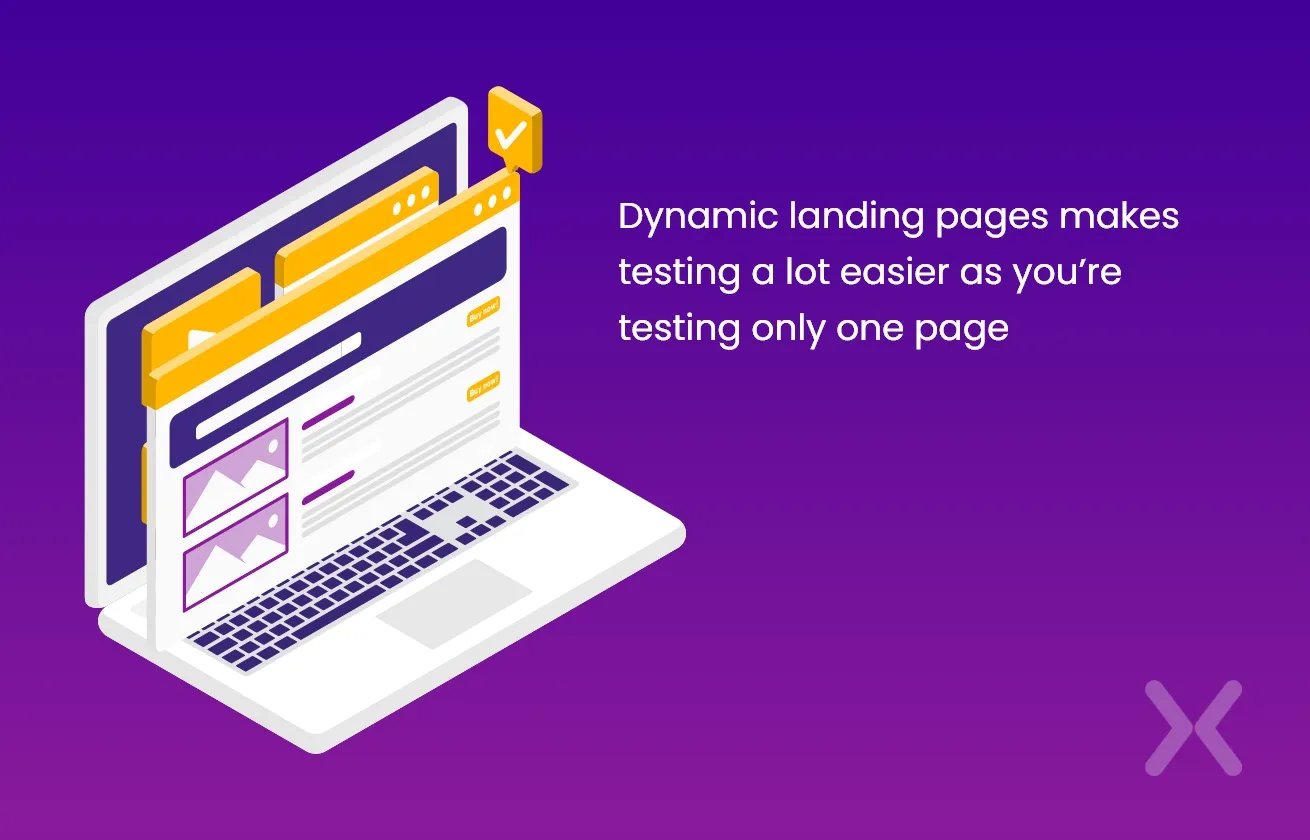
With Google dynamic ad landing pages, there is only one landing page as opposed to multiple variants, each targeting a different keyword. So, web page testing becomes a lot easier because you’re testing one page only. The test sample grows more rapidly because the data is pooled over the different keyword sub-variant.
Dynamic ad pages are able to do so much more - by utilising these functions you can skyrocket your conversion rates. Your effort will be repaid ten-fold.
Dynamic keyword insertion goes beyond the headline. To properly utilise the potential of your dynamic pages, think about the following:
The search phrase can be inserted into the body of the text, by the same means as with the headline.
The images can be changed depending on your dynamic keyword. For a clothing store, you could change the images depending on whether someone is searching for ‘men’s jeans’ or ‘women’s jeans.
You can also use the buyer’s location to display local offers on the Google dynamic ad landing page.
The dynamic page can also be changed according to whether it is being viewed on mobile or desktop. These landing pages are often called responsive pages.
As with any digital marketing campaign, dynamic pages need to be properly optimised. There is always room for improvement. Your work isn’t done once your dynamic ad landing pages go live. You still need to analyse metrics and use this information to improve your dynamic post-click landing pages. Here are some questions that need answering:
What keywords are people using when they are directed to your landing page?
Are visitors using mobile or desktop?
Are the majority of hits coming from PPC or organic sources?
You can also use classic landing page testing techniques such as A/B split testing to optimise specific elements on your dynamic pages. The concept behind A/B split testing is very easy - half of your visitors will be directed to version A of your landing page while the other half will be directed to version B - this selection is done at random.
The only difference between the two versions of your landing page will be the element you’re trying to optimise. You can then compare conversion rates between the two versions. For example, you can compare using different colour CTA buttons. In version A my CTA button is green, but in version 2, it’s red. If version A has better conversion rates, you can use green as your final choice.
Google Dynamic ad landing pages follow many of the same basic design principles as static landing pages. By using data-driven techniques, formatting, and content, you are able to drastically increase conversion.
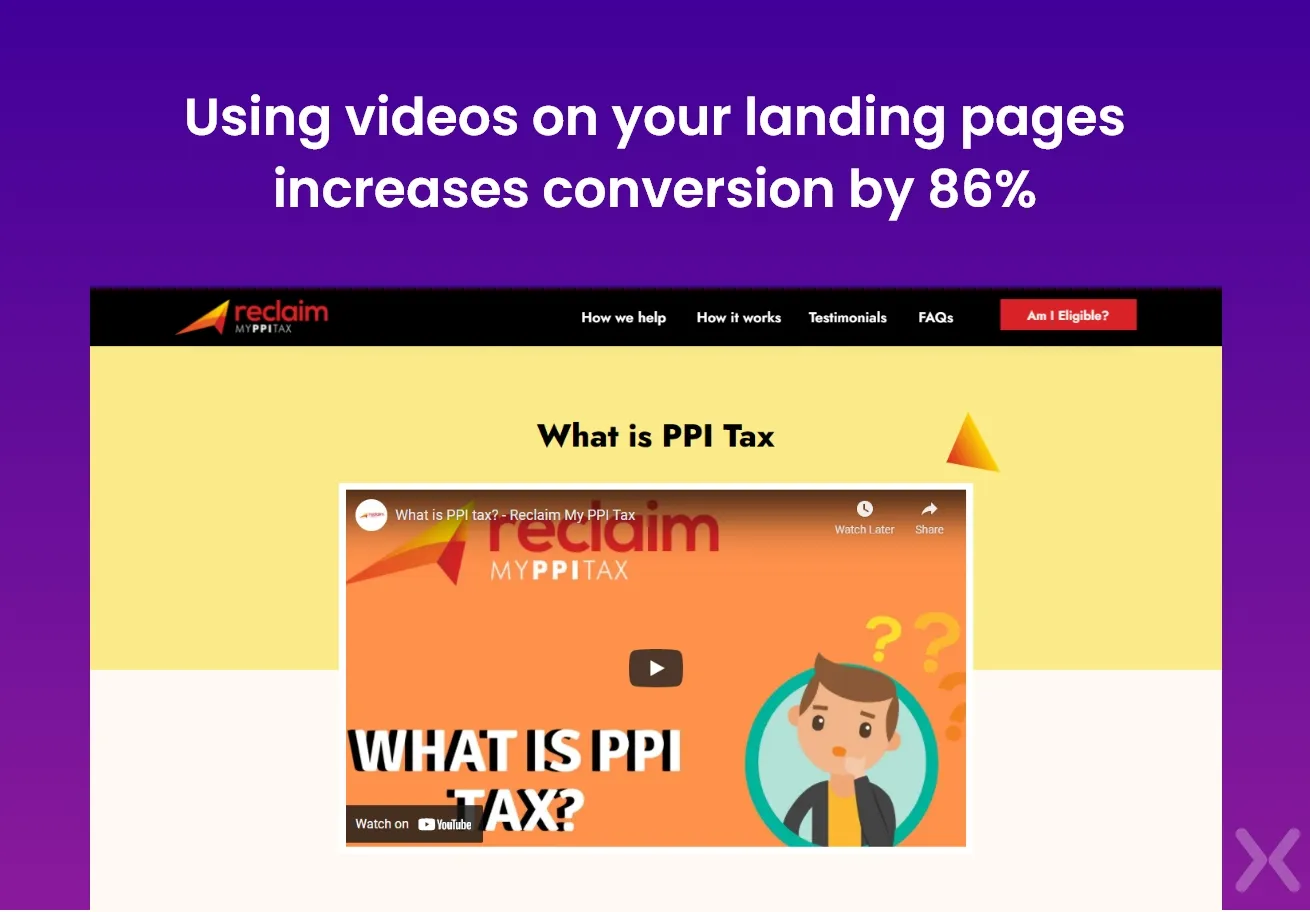
You want your reader to get as much information as possible with the least amount of effort. They haven’t taken the time to walk into your store, they have simply clicked a link. There is no original commitment from the buyer as with face-to-face sales. So, if there is too much text or overwhelming amounts of information, the user simply back clicks with nothing lost.
Incorporating videos into your dynamic ad landing pages is a great way to impart lots of information, whilst requiring minimal time and effort from your customer. Evidence shows that using videos on your landing pages increases conversion by 86%. With dynamic pages, videos have a disadvantage because your search phrase can’t be inserted. This doesn’t matter because you have used key bits of landing page copy - such as your headline and CTA to insert your search phrase.
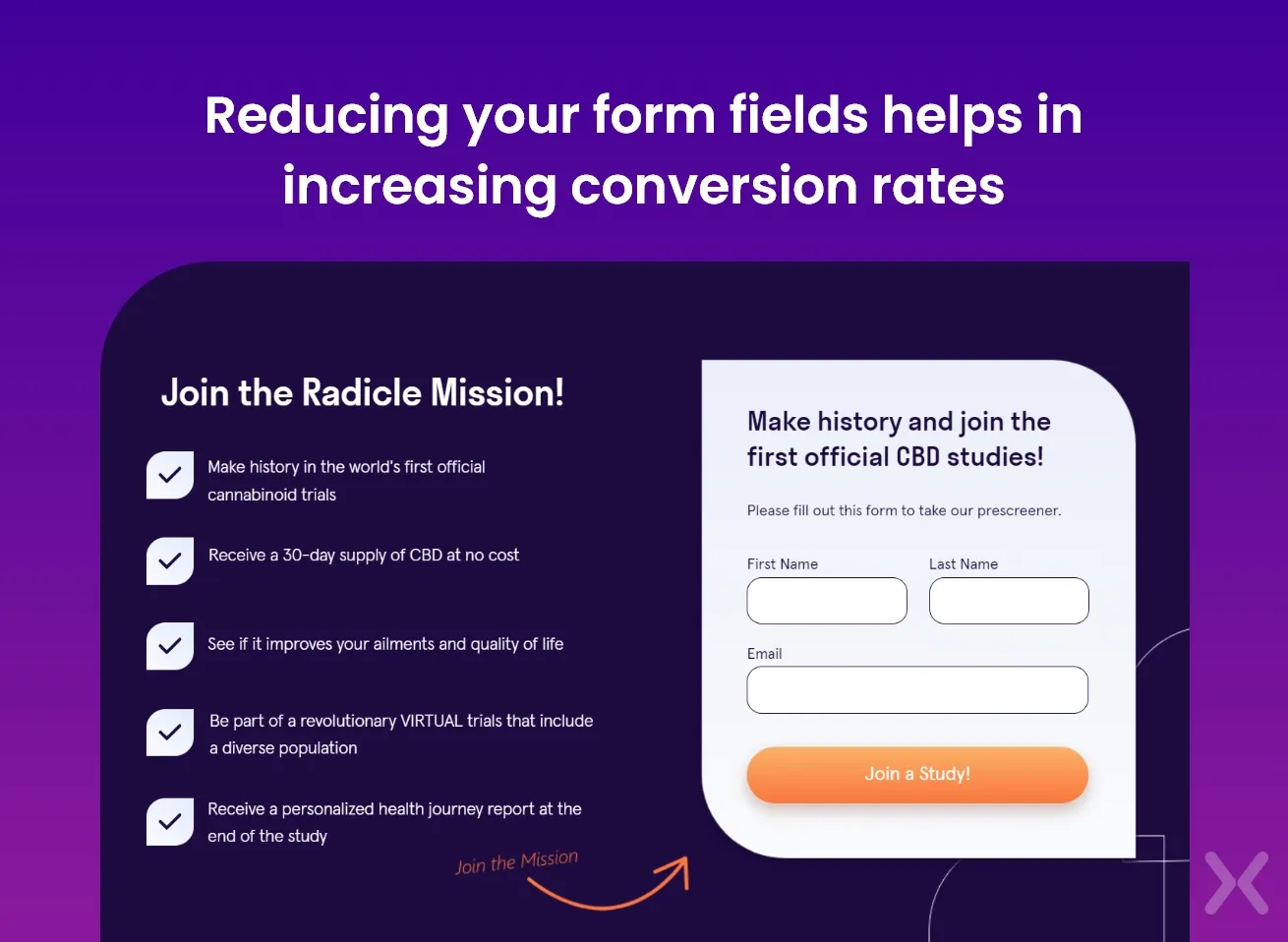
Users don’t want to spend hours and hours filling out complicated forms. A study by Unbounce showed that reducing your field forms from 11 (the industry average) to four increased conversion by 120%. They also found a 5% drop in conversion when a phone number is requested - users value their privacy.
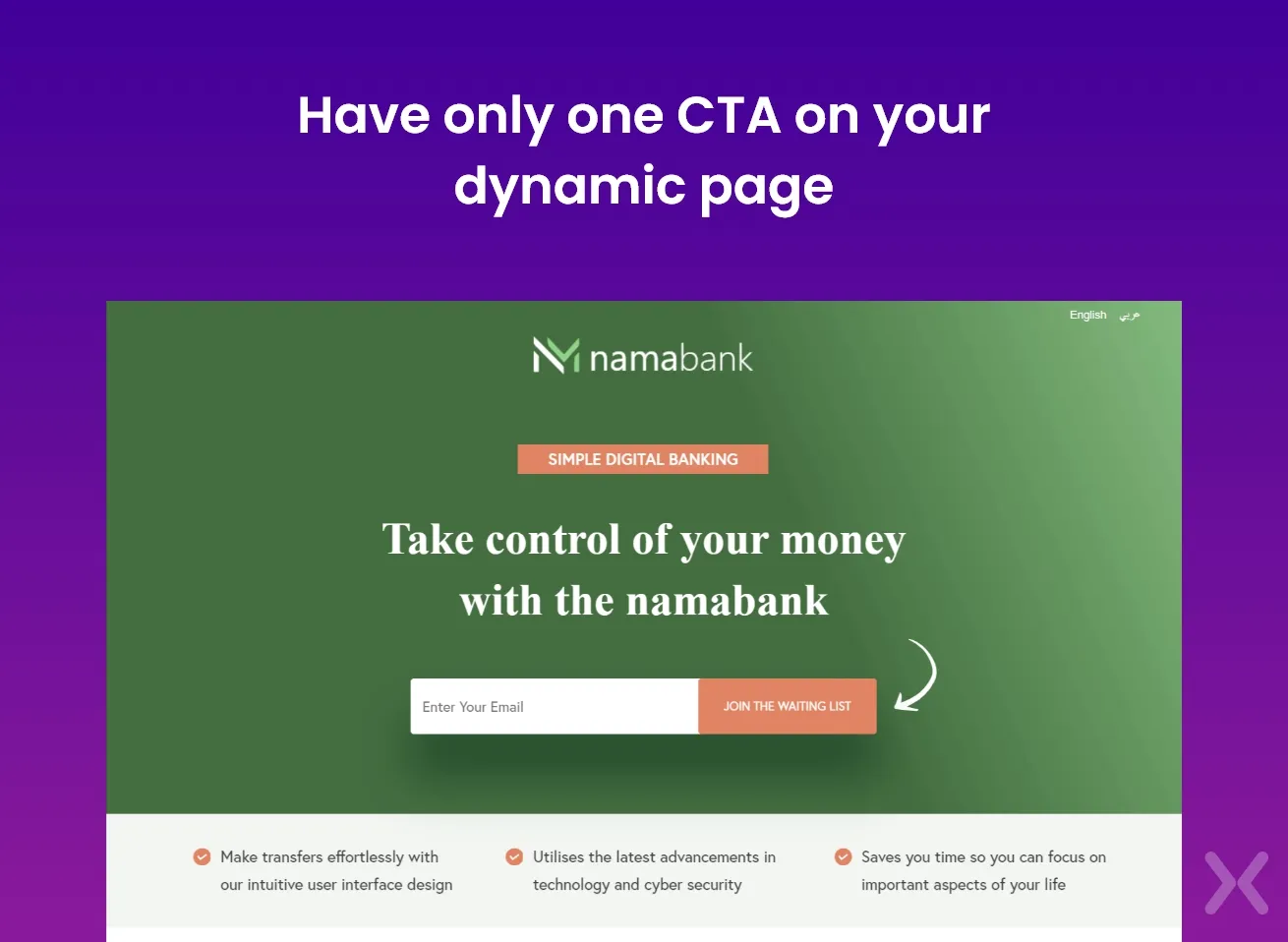
The golden rule of landing pages - static and dynamic alike, is to have minimal distractions from your CTA. You want your user to land, read your headline, engage with your content and then convert. When you distract the user with more than one CTA, your conversion rate goes down by 266%. Now consider that 48% of landing pages have more than one CTA.
By using the visitor’s location, you can insert deals specific to their location. This is a great way to make your content more relevant to the consumer and thus improve conversion.
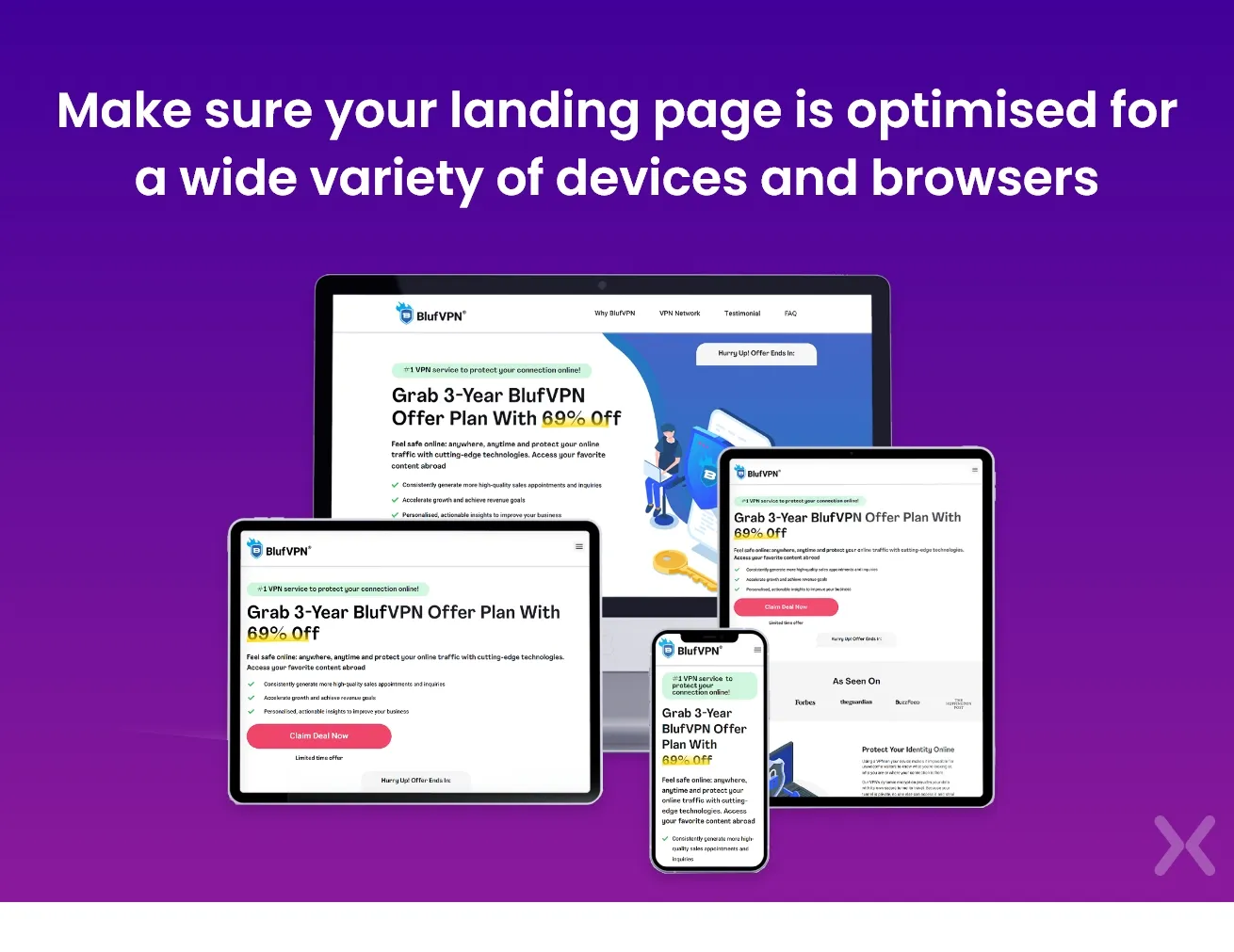
Clients access your dynamic ad landing pages from a wide variety of devices and browsers. You need to make sure your web page performs at peak efficiency across the board.
Unfortunately, only 50% of landing pages are properly optimised for mobile devices. This results in slow loading times. Research shows that most users will bounce after three seconds of loading time. It’s not only the loading time that’s affected - your page performance is compromised. - leading to distorted images and videos not playing.
So far, Google dynamic ad landing pages sound amazing - but is there a catch? Here are some of the common arguments against using dynamic pages:
You need more technical knowledge to build dynamic pages as opposed to the standard variety.
You need to have some background in coding. Additionally, you need to create URL parameters that allow your URL to change according to particular metrics such as keywords - a dynamic URL, so to speak. Of note, there are more and more tools designed to help you build Google dynamic ad landing pages.
Dynamic pages are often coded using scripts that Google is unable to index. This means that your organic hits will be lower than with a static page.
On the other hand, we have seen the benefits of using dynamic pages for PPC campaigns. This problem can be circumvented by using dynamic pages for PPC campaigns and static landing pages for organic SEO. There is no reason why we have to choose between one format and the other.
If looked at in the broader context, these two problems cancel each other out. You spend extra on a web developer to create your Google dynamic ad landing pages; however, you save money on your cost-per-click. Because the development cost is a once-off expense and your pay-per-click is ongoing, over time, the savings should pay for the development cost.
Additionally, the improved conversion rates of dynamic pages compared to static ones will further negate development costs.
Dynamic pages allow you to answer your customer’s needs directly. In an age where sales are so impersonal, dynamic pages give you more of an opportunity to connect.
It’s true that Google dynamic ad landing pages may cost more to develop. With the incredible potential to increase conversion, in time dynamic pages pay for themselves.
Dynamic pages increase your quality score. Your improved quality score decreases your cost-per-click for PPC campaigns.
Follow evidence-based landing page UX design strategies to increase your conversion rate.
Don’t just insert dynamic keywords into the headline - your content and CTA need to match your headline.
Dynamic pages battle to rank in organic search engine results because of the way they’re coded. Google can’t always read the script used. So, it’s best to use dynamic pages for PPC campaigns and static web pages for SEO campaigns.
To tap into the full potential of your Google dynamic ad landing pages, be sure to optimise for both mobile and desktop, as well as across multiple browsers.
At Apexure, we use our experience to create conversion-focused pages. We watch market trends and statistics, coupled with our own landing page expert analytical abilities to boost conversions. Contact us today!
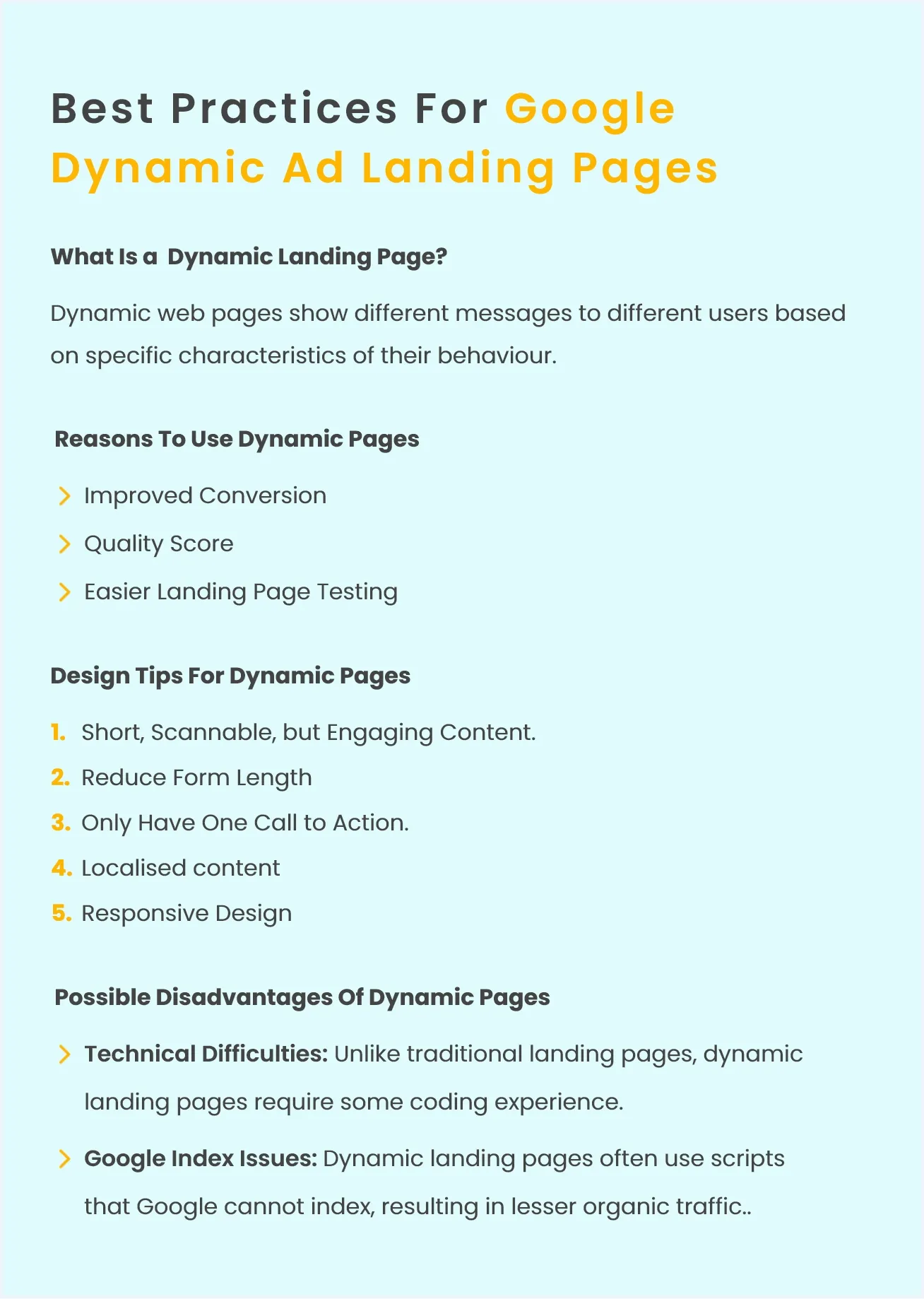
Related Articles:
Drive More Sales or Leads With Conversion Focused Websites and Landing Pages
Get Started.png)
In today’s fast-paced digital world, having a responsive website is no longer just a nice-to-have, it’s essential. Whether...
As artificial intelligence continues to evolve, businesses are finding innovative ways to enhance their marketing efforts. One of...
Get quality posts covering insights into Conversion Rate Optimisation, Landing Pages and great design